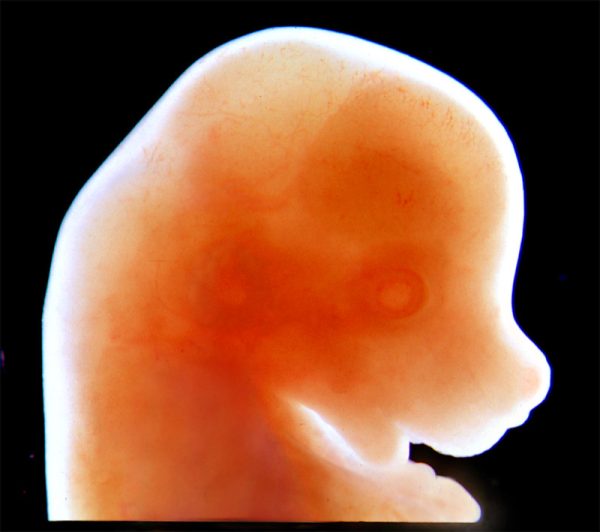First synthetic embryo with brain and beating heart independently produced twice

Mostly, people think that an embryo can only (except in the case of parthenogenesis) result from the sum of sperm and an egg. However, two research teams, one 1 in Israel and another multinational collaboration 2 have recently reported producing a synthetic mouse embryo from stem cells which lasted enough to have a brain and a beating heart.
There are three types of stem cells in early mammalian embryos: one will form the body’s tissues, while the other two assist in development. One of these stem cell groups will form the placenta and the other the yolk sac, which is where the embryo grows and gets its nutrients.
The authors of the second paper grew the three types of cells independently in vitro, combined them in the right proportions under similar conditions to real ones, and influenced gene expression to produce an embryo that underwent the early stages of embryonic development until the point where it had a rudimentary brain, a beating heart, and a yolk sac.
Although the embryo did not last longer than 8,5 days, it reached a stage where it had a semblance of a brain, the furthest any other synthetic embryo could be maintained. As this is a developmental stage where many pregnancies fail, it will be interesting to investigate the possible reasons underlying these failures in an in vitro system.
Moreover, this research can serve as groundwork for future development of synthetic replacement organs for transplantation. Another potential use is moving away from animal testing of new treatments/drugs to synthetic in vitro testing. However, a future shift from mouse research to human research might imply certain ethical issues; thus, further regulations are needed before this could be a reality.
References
- Tarazi et al. (2022) Post-gastrulation synthetic embryos generated ex utero from mouse naive ESCs Cell 185, 3290–3306 doi: 10.1016/j.cell.2022.07.028 ↩
- Amadei, G., Handford, C.E., Qiu, C. et al. (2022) Embryo model completes gastrulation to neurulation and organogenesis Nature doi: 10.1038/s41586-022-05246-3 ↩